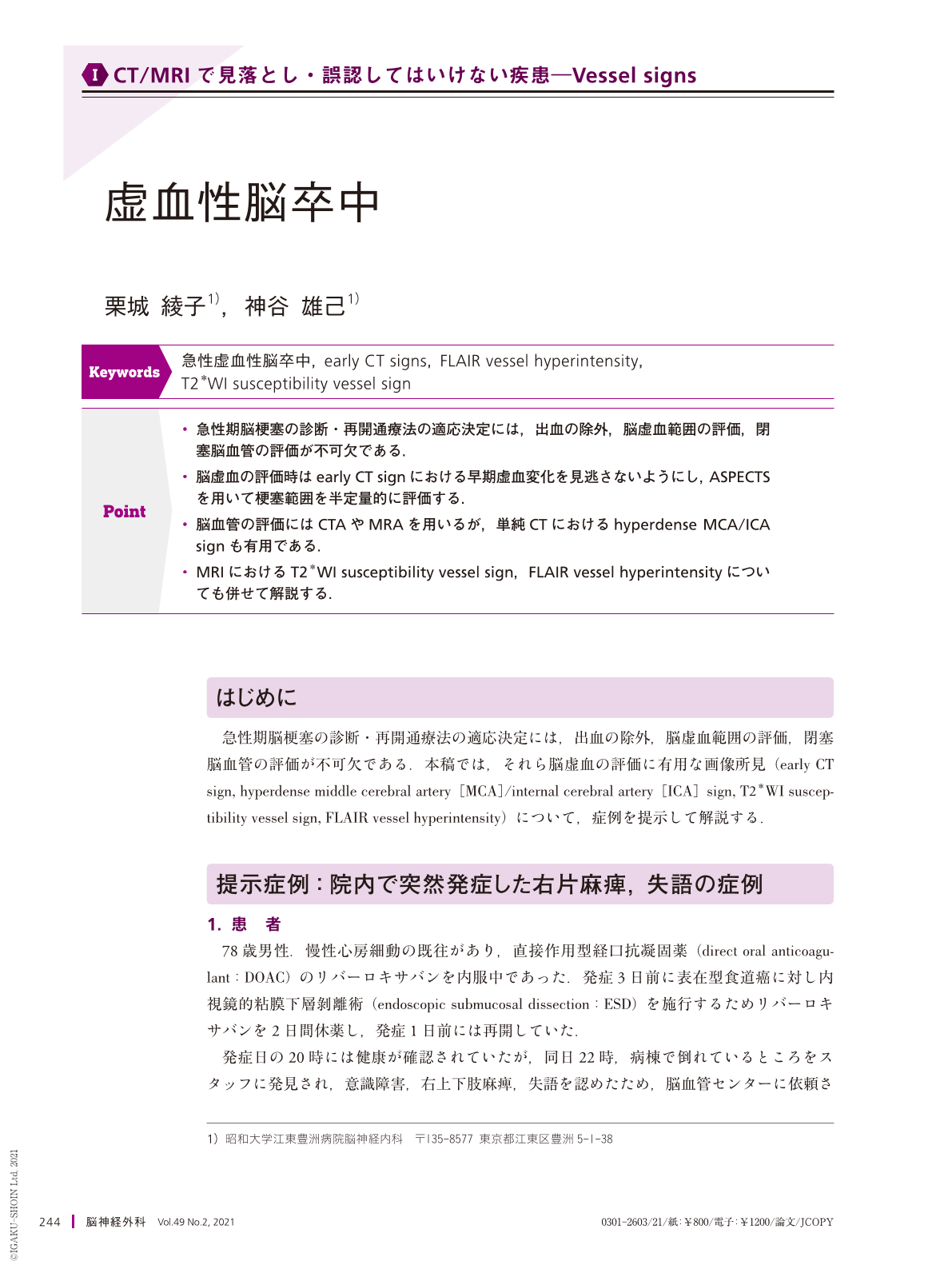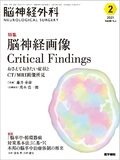Japanese
English
- 有料閲覧
- Abstract 文献概要
- 1ページ目 Look Inside
- 参考文献 Reference
Point
・急性期脳梗塞の診断・再開通療法の適応決定には,出血の除外,脳虚血範囲の評価,閉塞脳血管の評価が不可欠である.
・脳虚血の評価時はearly CT signにおける早期虚血変化を見逃さないようにし,ASPECTSを用いて梗塞範囲を半定量的に評価する.
・脳血管の評価にはCTAやMRAを用いるが,単純CTにおけるhyperdense MCA/ICA signも有用である.
・MRIにおけるT2*WI susceptibility vessel sign,FLAIR vessel hyperintensityについても併せて解説する.
Case: A patient with a history of chronic atrial fibrillation was diagnosed with sudden onset of right hemiparalysis in the hospital. The patient had been normal two hours prior and was referred to the cerebral vascular center.
Images: Head CT images showed early ischemic changes in the left frontal lobe, insula, and temporal lobe(Alberta Stroke Program Early CT Score[ASPECTS]: 6 points). A hyperdense internal carotid artery(ICA)sign was found at the top of the left internal carotid artery.
MRI DWI-ASPECTS was performed at 6 points. The MRA showed loss of the left internal carotid, anterior cerebral, and middle cerebral arteries.
T2*WIs showed a susceptibility vessel sign(SVS)at the top of the left ICA and FLAIR vessel hyperintensity(FVH)in the left ICA to the middle cerebral artery.
Diagnosis: The patient was diagnosed with acute cerebral embolism with clinical-DWI mismatch and treated with endovascular therapy.
Commentary: Early CT signs are important in determining cerebral ischemic lesions, and hyperdense ICA/MCA signs are useful in identifying occluded vessels. Early ischemic changes can be seen more easily on MRI-DWI, and the location of the occluded vessel can be estimated by evaluating MRA, SVS, and FVH together.

Copyright © 2021, Igaku-Shoin Ltd. All rights reserved.


